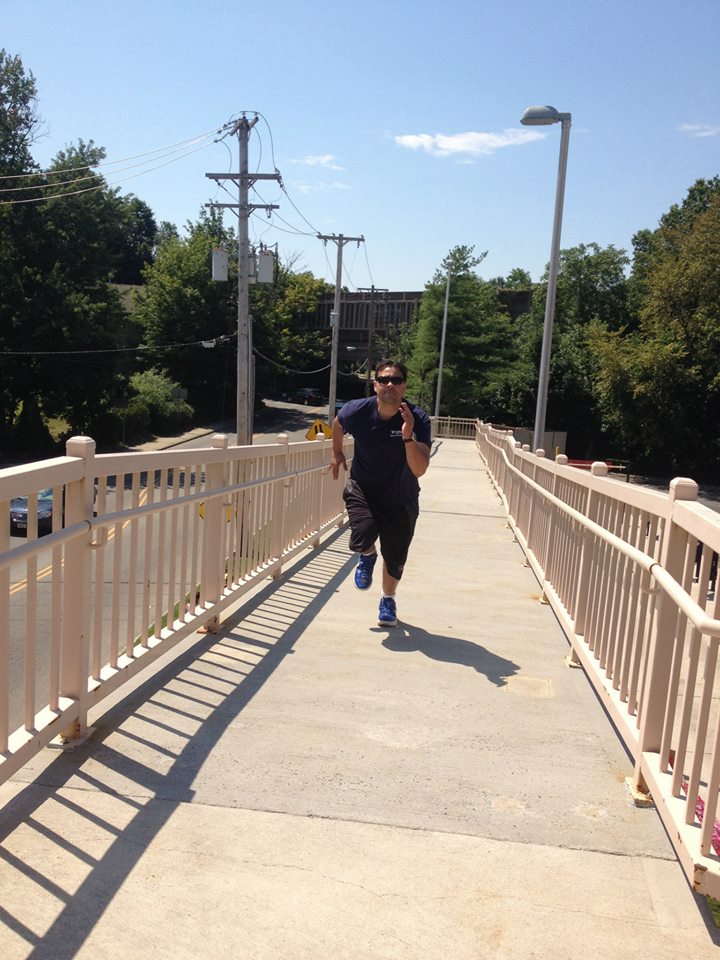Fix this 5 common running errors:
By Jose Fuentes/Strength &Conditioning Certified Specialist

I have been helping clients to complete marathons for the past 20 years. A particular case was my client katherine; who after losing 125 lbs, dreamt of completing her first run. The common problems I saw on my client Katherine are the same problems I have seen many times on even experience runners so let’s take a look.
“Running can introduce between three to 10 times your body weight in force through the lower extremity. If your running form, your body’s movement patterns or your posture are dysfunctional, “you can see how that could become a problem.”
Poor posture patterns can affect every function your body performs each day and, experts say, is a major contributor to chronic aches and pains. Statistics from the Centers for Disease Control and Prevention and the National Center for Health Statistics showed that knee and low back pain affect 19.5 and 28.1 percent of Americans, respectively.
The number one problem I have seen in my clients during running, is postural issues. When you run—and put that triple force into the ground over and over—postural problems can exacerbate pain and lead to injury. For that reason I was always very careful with my client Katherine, during her marathon training few weeks ago. And even if they don’t result in pain or injury, other postural issues can decrease your performance by requiring more energy or negatively affecting your breathing. These five postural issues are some of the most common suffered by runners. Here’s how to find out if they’re affecting you—and how you can help fix them.
But first, remember: Pain is a stop sign. These exercises can help with postural issues, but if you’re experiencing pain when you run, consult your doctor.
Posture Issue: Forward Head
What it is: A forward protrusion of the head at rest, often paired with “thoracic kyphosis,” a condition where your shoulders are rolled forward. In proper alignment, a standing person viewed from the side should show a straight line down from their ear through the shoulder and arm to the waist.
When someone has a forward head posture, the ear (and thus the head) will jut forward, so the head is no longer in line with the shoulder and spine. Not only is it not an attractive posture, forward head can cause neck strain, back pain, can affect your balance, and, for runners, it can “negatively affect breathing capacity and efficiency.
1-Posture Issue: Forward Head

What it is: A forward protrusion of the head at rest, often paired with “thoracic kyphosis,” a condition where your shoulders are rolled forward. In proper alignment, a standing person viewed from the side should show a straight line down from their ear through the shoulder and arm to the waist.
When someone has a forward head posture, the ear (and thus the head) will jut forward, so the head is no longer in line with the shoulder and spine. Not only is it not an attractive posture, forward head can cause neck strain, back pain, can affect your balance, and, for runners, it can “negatively affect breathing capacity and efficiency.
What can I do?: For starters, work on how you sit. Experts in ergonomics and posture recommend sitting with your hips even with or above your knees, and I suggest making sure the screen is in line with the top of your head. While seated, occasionally put your attention on your posture: “I recommend to my client Katherine, focus on placing her shoulder blades in the back pockets,” in other words, pulling the shoulder blades slightly together and down towards the butt. “This scapular setting will encourage a more mid line positioning of the head and cervical spine, which can help reduce strain.”
Proper Breathing:
In running poor breathing, could be cathastrophic, I have seen many cases where that single factor, has thrown away everything else. Let’s take a look at how to breath soundly:
Breathe with your diaphragm. The diaphragm is a muscle that sits like an upside-down bowl just beneath your ribs, contracting and relaxing to move air through your lungs. Deep “belly breathing” that visibly moves your abdomen in and out helps strengthen this muscle and improve your endurance.[1] If your belly stays flat and your chest pumps up and down, you’re taking shallow “chest breaths,” and will fatigue sooner.
Arm Swing And Running Economy:
Running with a normal arm swing indeed burn less energy (3% less than the behind-the-back form, 9% less than across-the-chest, and 13% less than hands-on-head). It also significantly reduced shoulder and pelvis rotation. Those two findings are connected: at least part of the extra energy needed for the “funny runs” probably comes from the muscular effort required to rotate the torso in order to counterbalance the rotational angular momentum of the legs (which is what the arm swing normally does).
Your arms comprise about 10% of your total weight, so getting rid of them would save about 10% of the energy you’d normally burn running. But then you’d have to spend extra energy rotating your torso with each stride, which might outweigh the benefits. A study of Paralympic athletes with no arms, they note, could offer further interesting insights into the role of the arm swing.
Another point they raise in the discussion is the possibility that arms play a different role in sprinting versus distance running. In distance running, the primary goal is to burn as little energy as possible at a given pace, so the best advice seems to be to keep your arms relaxed and let them swing as passively as possible. In sprinting, you want to propel yourself forward as quickly as possible, and you don’t care how much energy you burn, so perhaps there’s a role for pumping your arms actively.
There’s also some neat research suggesting that arm and leg motion is “neurocoupled,” perhaps an evolutionary remnant of when our ancestors were quadrupeds. Gait rehabilitation studies have shown that people are able to generate more force with their legs when they also engage their opposite arms. “This action may provide an ‘indirect’ method to help activate the legs when ‘directly’ activating the legs is compromised, maybe during the period of time when the runner’s legs are fatigued at the end of the race.” Or maybe not — it’s an idea that hasn’t been tested, but would be neat to see studied.
The big conclusion? Keep swinging your arms. How? “I think the ideal scenario for swinging the arms is that the motion would be primarily passive, to help reduce the metabolic cost of running, So keep them relaxed, in a comfortable position — and not pinned to your sides.
2

Training with Jose over past year has rebuilt my strength and endurance. Have learned a lot and did my first 1/2 marathon and able to keep up with my daughter too. Jose has helped me with posture, running style and strength so that I could do it ! It was a lot of fun !
thank you kathy!